L5: Strengths, Limitations, Improvements (Rangelands)
1/66
There's no tags or description
Looks like no tags are added yet.
Name | Mastery | Learn | Test | Matching | Spaced |
|---|
No study sessions yet.
67 Terms
general:
strengths
-adapted to prevailing environmental conditions
-more tolerant of poorer soils
-many species → more resistant
-perennial native grasses provide a permanent ground cover
-invaluable role in reducing soil erosion and increasing water infiltration
-drought resistant, deep-rooted and can draw on moisture reserves from deep
-moisture is used by some native species at a slower rate than exotic grasses
-native grasses can also help control dryland salinity
-Minimal or no fertiliser is needed by native grass
-tolerant of firesL some proliferate under semi-regular burning
-nutritious when actively growing
how do native grasses control dryland salinity? (3)
-deep root system
-summer activity
-perenniality
(reduces recharge to ground water)
example of species that proliferate under semi-regular burning?
Heteropogon contortus
limitations of rangelands
-Seasonal dry matter production
-lower herbage quality (protein, ME, P, S, Na) than improved pasture
-Fragility under grazing
-Productivity low per head, and per hectare, especially in dry season
-Degree of limitation varies with rangeland type
improvement of rangelands
-supplementation
-tree removal
-improved grazing management
-improved species
improvement:
supplementation
-improved LWG can be achieved through supplementation
-P in wet season when grass is green
-N in dry season to improve grazing of poor dry herbage
-N, S necessary
-suppleents are expensive
phosphorus deficiency in N. Aus
-most of N Aus, deficient
-coast is most adequate
tree clearning
-vary from open plains to open woodlands
-can reduce grass growth due to competition for soil water
-density in many native pastures increased since advent of ruminant grazing and reduced burning (aboriginals burnt regularly)
-occurred since European settlement using several methods
-strict clearing guidelines and permission
-Woody regrowth can be a major problem after clearing, especially if overgrazing and no burning
improvement:
tree clearning
-chaining: cheapest method of tree clearning
what are (3) factors that affect tree growth?
-competitive factor
-stimulatory factor
-effect next to pasture
risks:
woodland vegetation
-Lack of response to clearing or thinning
-Regrowth problems
-Nutrient decline
-Erosion risk
-Impact on the water cycle and the risk of salinity
-Effects on conservation of native plants and animals
purpose:
regeneratiave agriculture in livestock enterprises
-return trees to the landscape to create a woodland environment
regenerative agriculture in livestock enterprises
-nutrient cycling
-shade for animals
-habitat for fauna
-C sequestration
-secondary income
improvement:
better grazing management (level of utilization)
-stocking rate is the most important
-Long-term carrying capacity achieved if graziers use less than 30% of summer growth
-Heavy stocking weakens the perennial grasses, causing erosion, woody regrowth, ingress of weeds
-Rangelands frequently overgrazed, especially during dry timessummar
summary:
Ecograze project (better grazing management)
-suggesting 25% utilization overall, or early wet season spelling, then increase utilization rates to 50% utilization
-Wet season spelling important in recovery of 3P grasses
-more paddocks so can be rotationally spelled in early wet
-increase cash flowim
improvement:
better grazing management
-Rotational grazing or cell grazing better for pasture stability than continuous grazing
-fences to separate resilient and non-resilient, preferred and non-preferred pasture types
-Space water troughs to give more even grazing (within 3 km for sheep, or within 5 km for cattle)
-oversow with adapted legume
-replace native grasses
improvement advantages:
introduce better species
-Intensify animal production
-Improve system profitability
-Reduce or remove the need for supplementation
-Higher productivity gives flexibility to meet variety of market requirements
-More resilient under grazing, reduced degradation
-Rotate with crops and improve soil fertility
what is one type of native pasture that does not require too much improvement? Why?
-Mitchell grasslands
BC:
-contain excellent native grasses already
-Perennial Mitchell grasses – Astrebla spp
-Annual Flinders grass (Iseilema spp)
-introduction of a legume that can grow on cracking clay soils (Desmanthus spp. and Caatinga stylo (Stylosanthes seabrana)
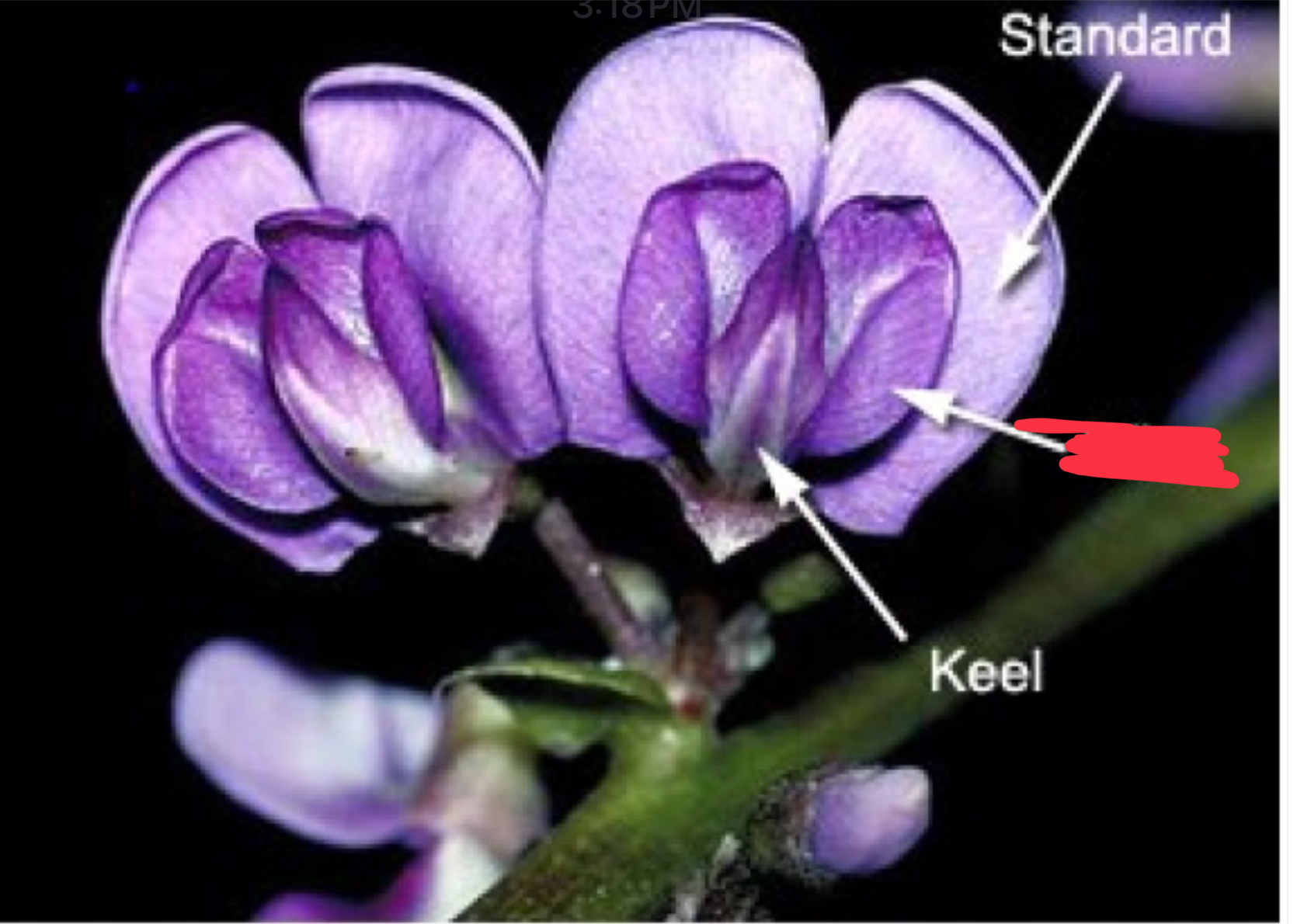
wing
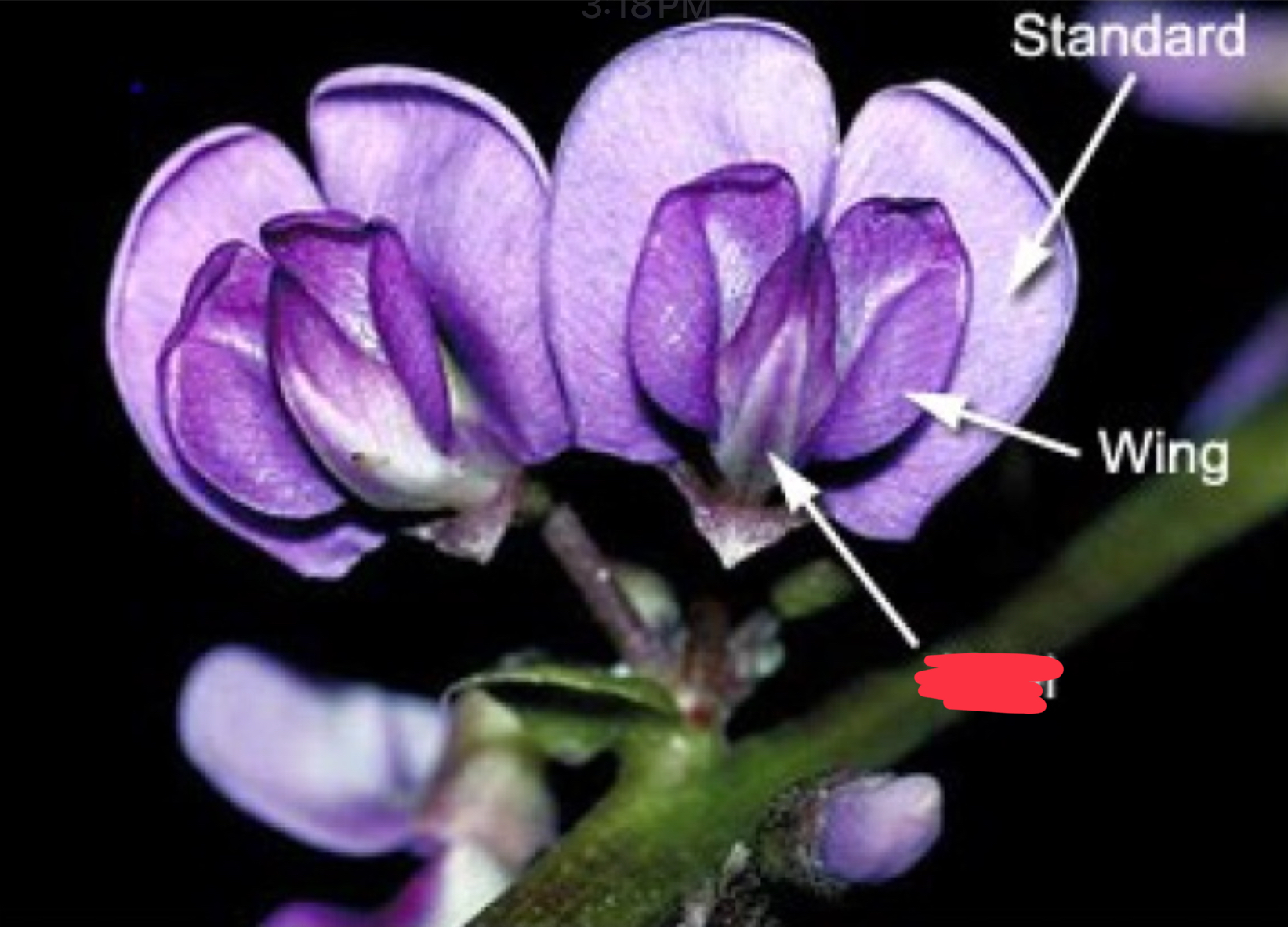
keel
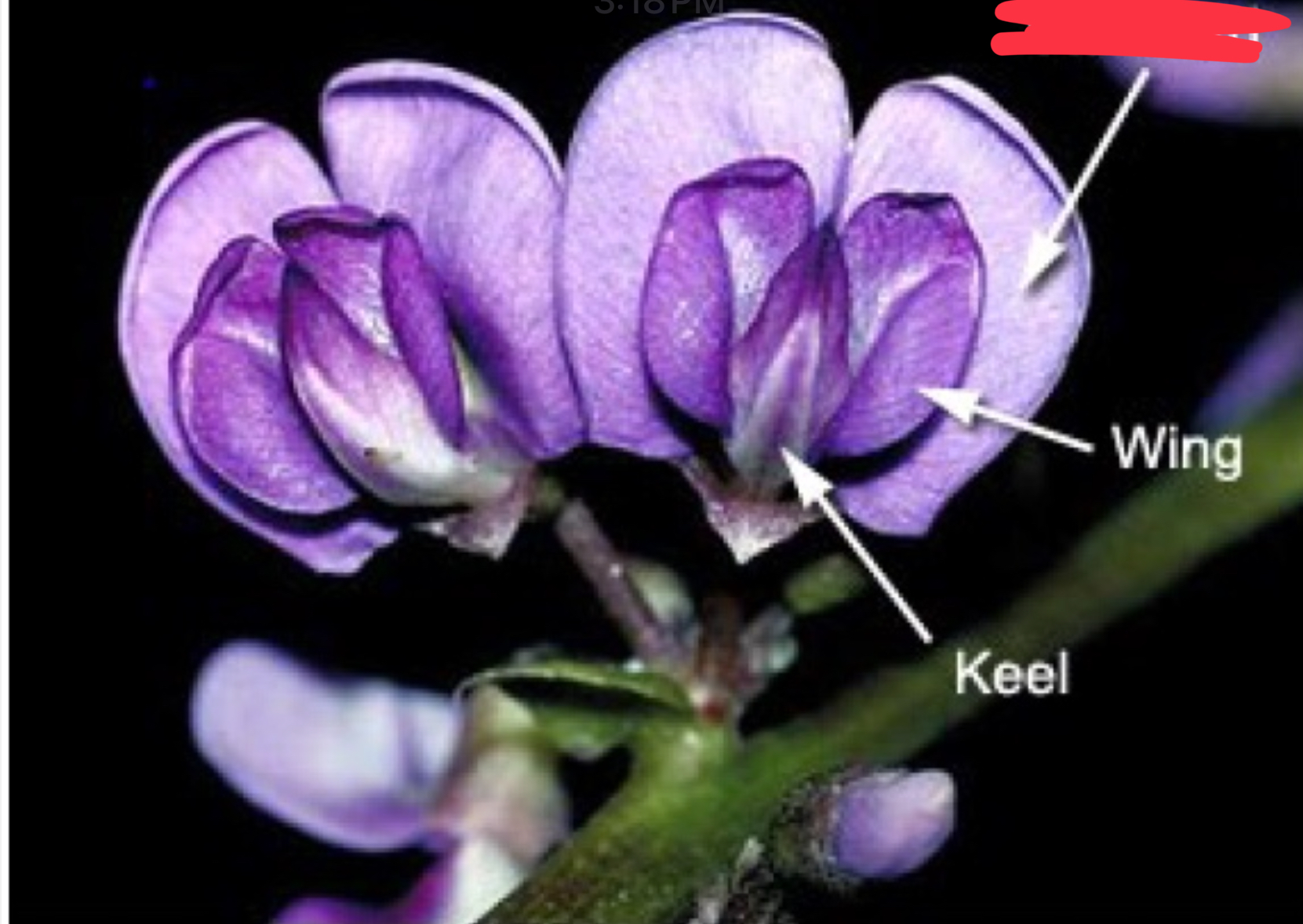
standard
benefits of sowing legumes
-increase forage quality
-higher digestibility
-improve forage yield
-improve soil N
-prevent excessive drainage
-legumes hold their feed quality longer than grass species
strengths:
SHRUBBY STYLO/SECA STYLO(Stylosanthes scabra)
(tropical/sub tropical legumes)
-widely adapted
-drought tolerant
-well suited to low P soils
-Well suited to extensive grazing systems
-New varieties resistant to anthracnose
-Relatively easy to establish and manage
definition:
anthracnose
-general term for a group of fungal diseases that primarily affect plants, causing dark lesions, sunken spots, and sometimes cankers on leaves, stems, and fruits
limitations:
SHRUBBY STYLO/SECA STYLO(Stylosanthes scabra)
-exhibit low palatability
-Not adapted to heavy clay soils
-can dominant if not managed
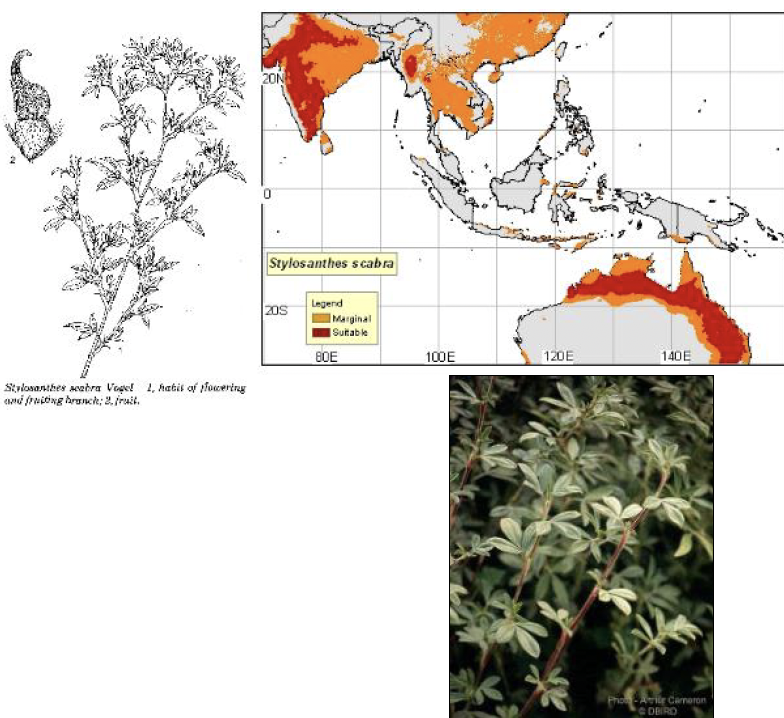
SHRUBBY STYLO/SECA STYLO(Stylosanthes scabra)
strengths:
CARIBBEAN STYLO (VERANO)(Stylosanthes hamata)
-can over sow into native pasture country or grown with sown grasses
-Grows on low fertility soils (low P)
-Highly persistent under grazing
limitations:
CARIBBEAN STYLO (VERANO)(Stylosanthes hamata)
-intolerant of water-logging
-frost sensitive
-restricted to tropical enviro
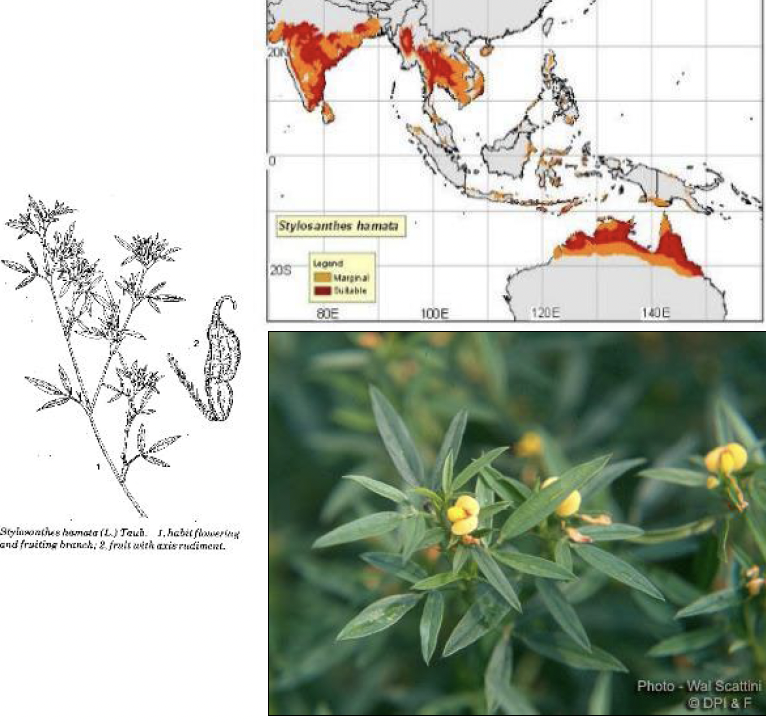
CARIBBEAN STYLO (VERANO)(Stylosanthes hamata)
common name for CARIBBEAN STYLO (VERANO)(Stylosanthes hamata)
Verano stylo
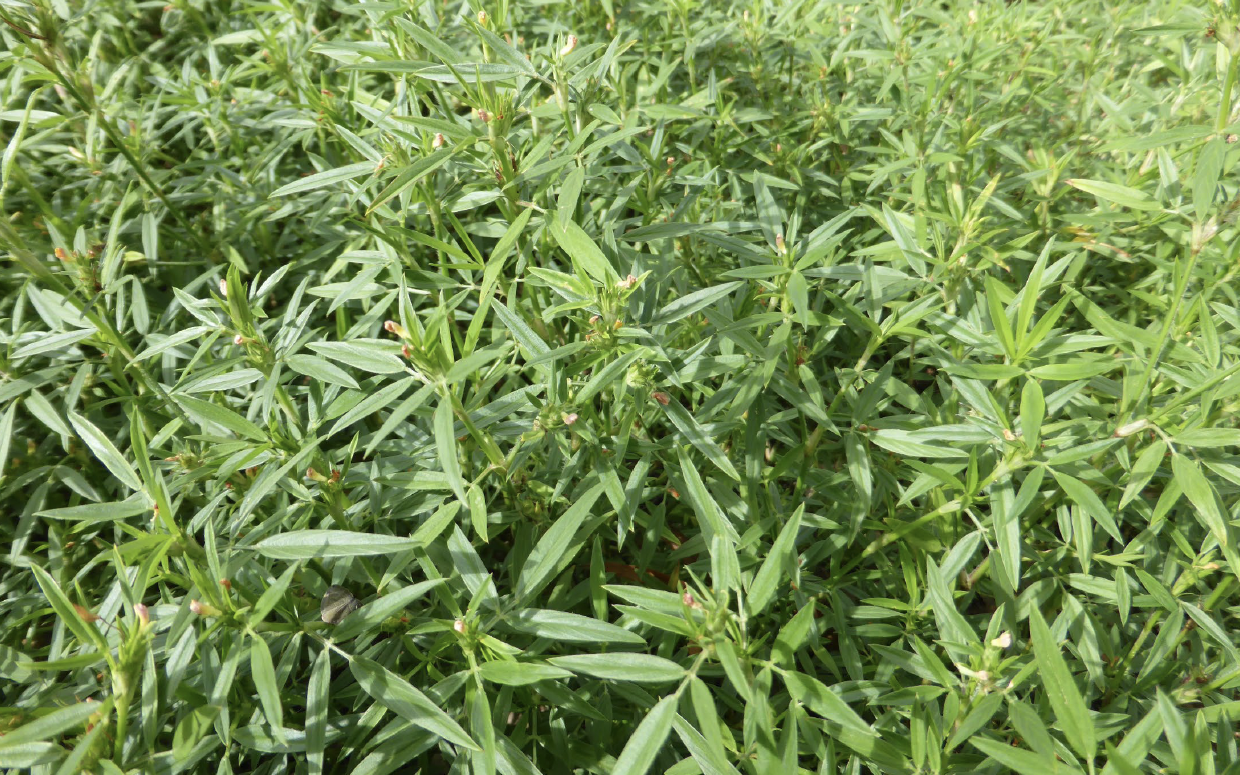
CARIBBEAN STYLO (VERANO)(Stylosanthes hamata)
or, Verano stylo
strengths:
CAATINGA STYLO(Stylosanthes seabrana)
(tropical/subtropical)
-suitable for clay and clay loam soils
-cold-tolerant than S. scabra or S. hamata
-Early flowering, and prolific seeding
-Tolerant of heavy grazing
-Anthracnose resistant
limitations:
CAATINGA STYLO(Stylosanthes seabrana)
(tropic/subtropic)
-drops leaves (cool/dry season)
-highly specific rhizobium requirement
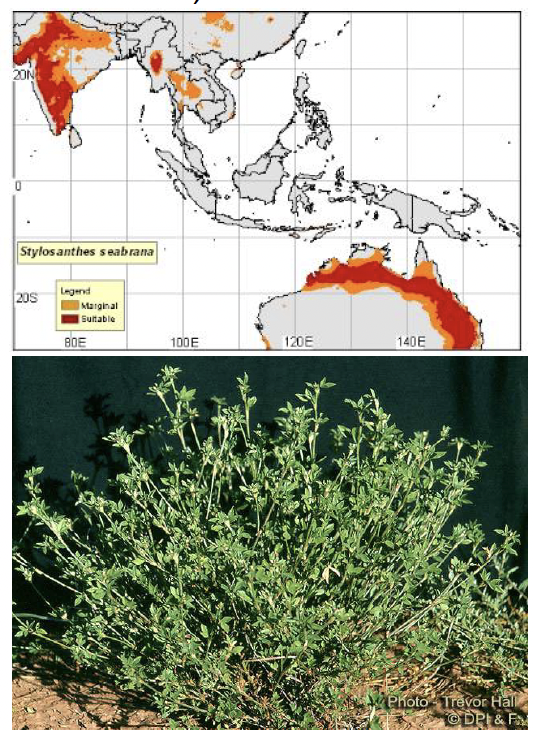
CAATINGA STYLO (Stylosanthes seabrana)
strengths:
ROUND LEAF (WYNN) CASSIA (Chamaecrista rotundifolia)
(trpical/subtropic)
-rapid establishment, spread
-low fertility demand
-dapated to acid soils
-high seed yieldsl
limitations:
ROUND LEAF (WYNN) CASSIA (Chamaecrista rotundifolia)
-low palatibility
-poor drought tolerance
-weedy if over grazed
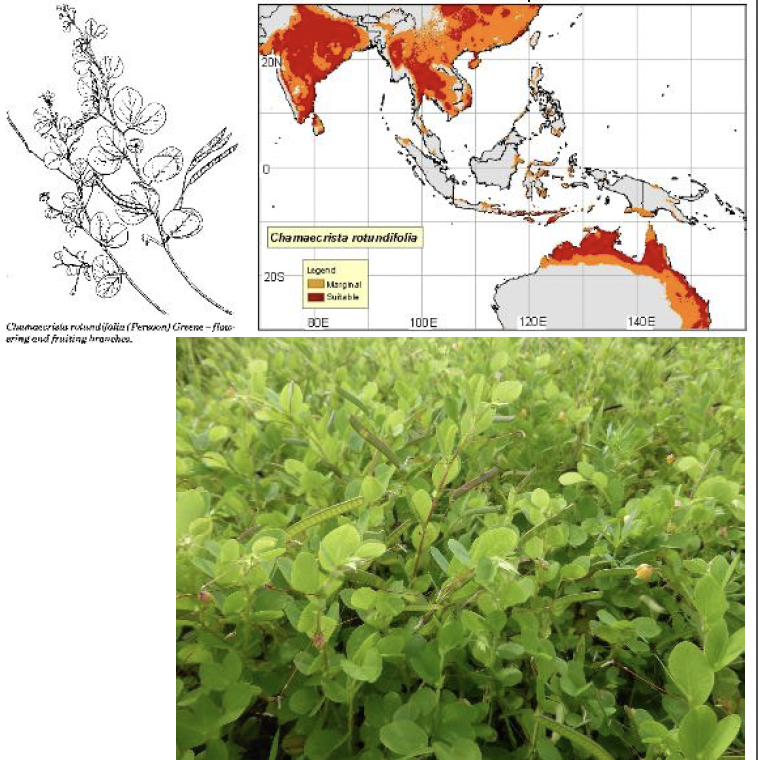
ROUND LEAF (WYNN) CASSIA (Chamaecrista rotundifolia)
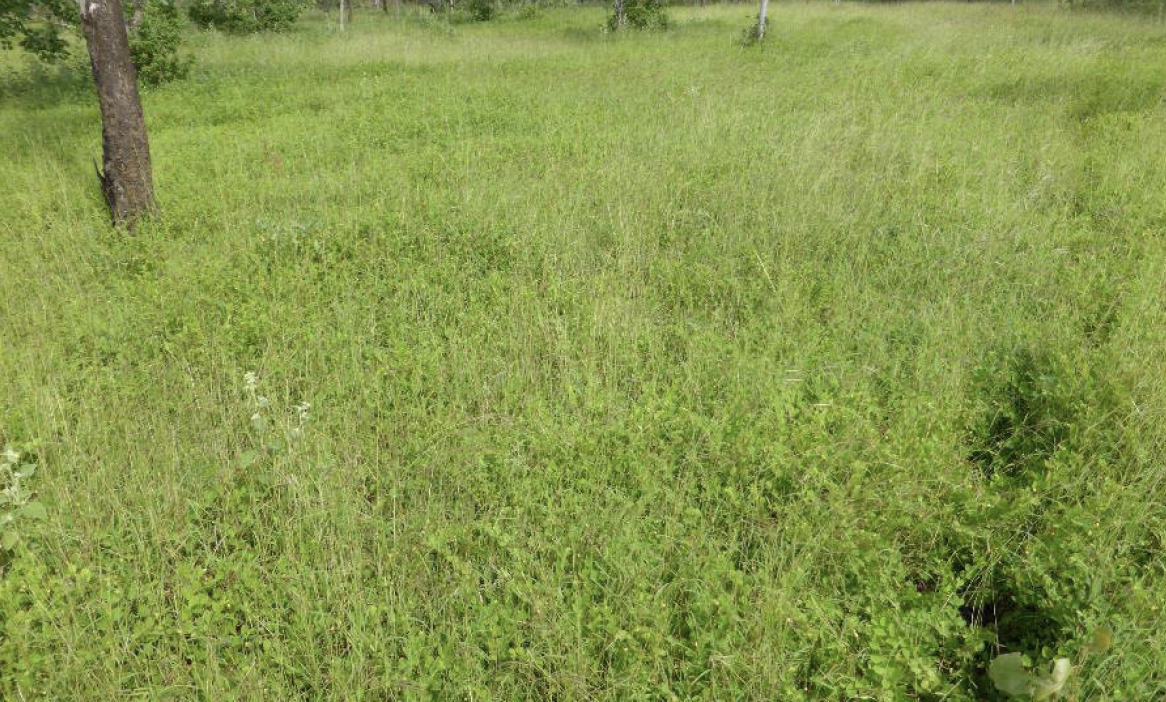
ROUND LEAF (WYNN) CASSIA (Chamaecrista rotundifolia)
strengths:
DESMANTHUS (Desmanthus virgatus)
-heavy grazing tolerant
-persistant in low rainfall
-alkaliine, sodic, saline, heavy clay tolerant
-high seed production
-gets along well with grass pastures in sub-humid, moderate fertility enviro
limitations:
DESMANTHUS (Desmanthus virgatus)
(tropic/subtropic)
-high hardseededness limits new recruitment
-relatively low DM productivity in vigorous grass pastures
-limited potential as key legume species due to low DM yields, hiigh and early seeding
-highly specific in its rhizobium requirements
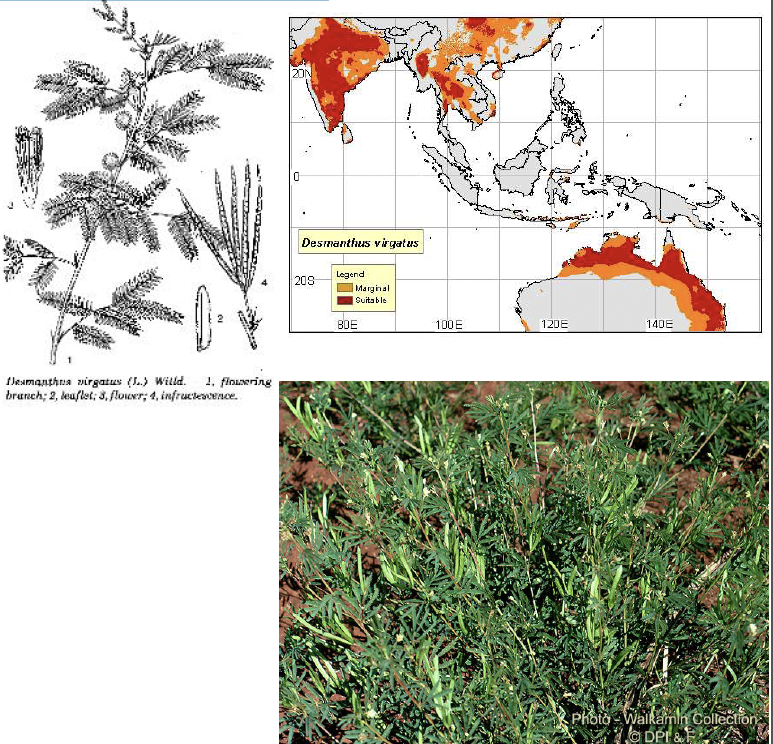
DESMANTHUS (Desmanthus virgatus)
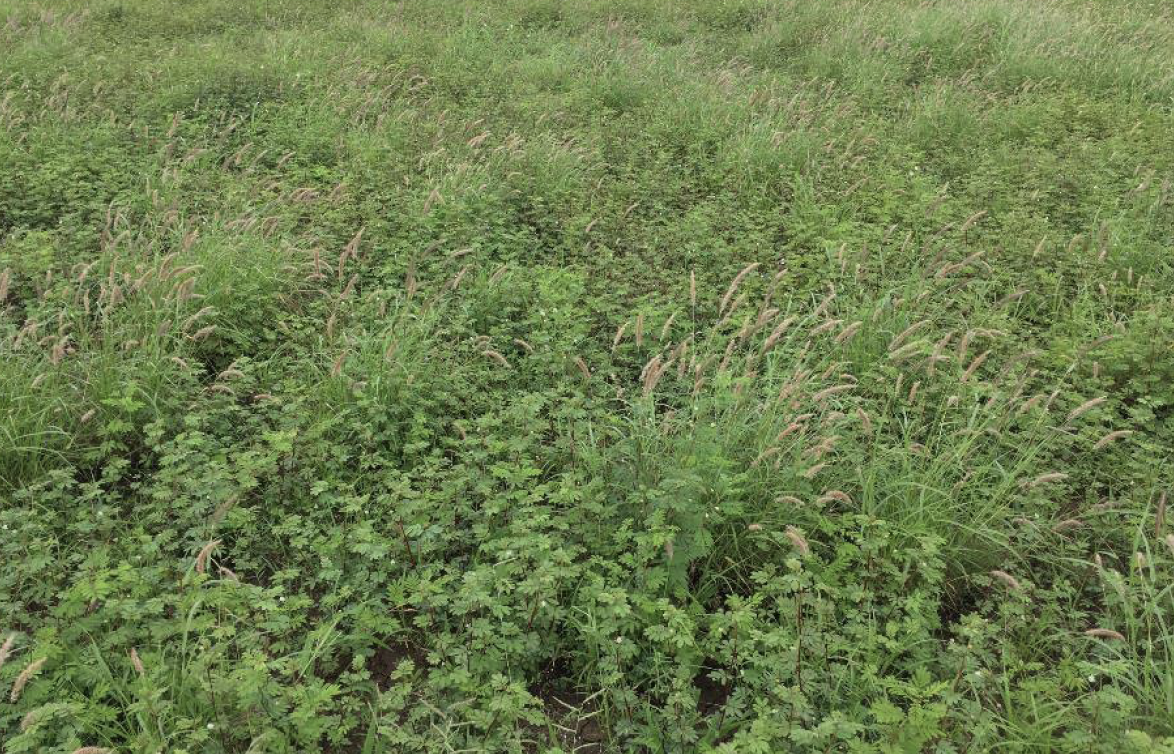
Progardes desmanthus
-specifically bred, multiple cultivar blend, primarily of Desmanthus species like D. virgatus, D. bicornutus, and D. leptophyllus. Progardes is designed to be more adaptable to specific environmental conditions
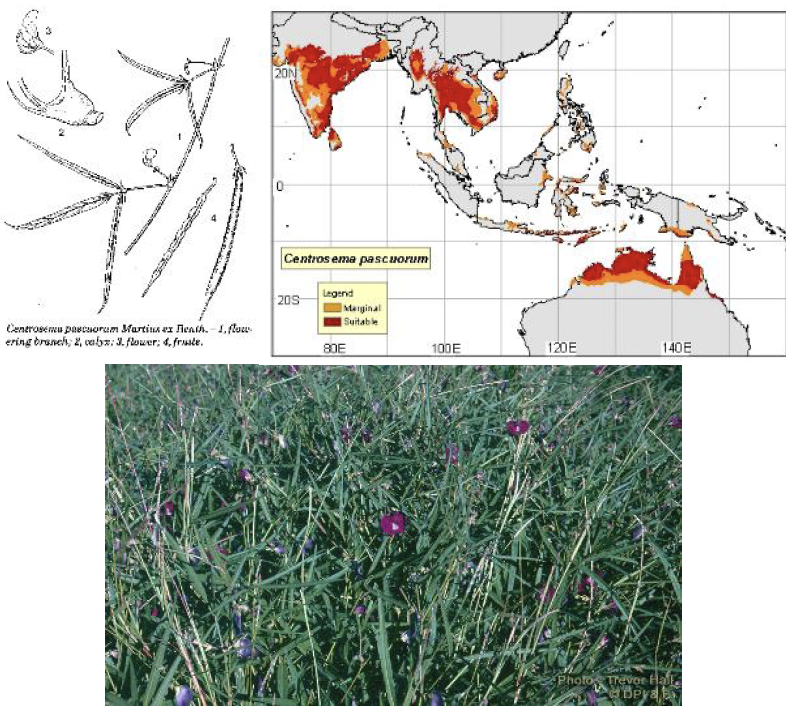
CENTURION CENTRO(Centrosema pascuorum)
strengths:
CENTURION CENTRO(Centrosema pascuorum)
(tropic)
-high quality storage for pastures, ley farming, hay production
-well adapted to dry tropics, tolerates seasonal flooding, wide range of soil (heavy clay)
-self-regenerating annual
-high seed production
limitations:
CENTURION CENTRO(Centrosema pascuorum)
(tropic)
-persistent depends on adequate soil seed reserve
-ley farming: susceptibility to root-knot nematodes
-not adapted to acid, infertile soil
strengths:
BUTTERFLY PEA(Clitoria ternatea)
(tropic,subtropic)
-easy to establish (heavy clays, surface-crusting soils)
-useful ley legume
-palatable, high nutritional value
-good for fertility restoration
-high forage and seed production
-moderate tolerance of salinity and sodicity
limitations:
BUTTERFLY PEA(Clitoria ternatea)
(tropic, subtropic)
-needs moderate fertility soils
-requires careful grazing management
-replanting ever 5-8 years because easily dominated

BUTTERFLY PEA(Clitoria ternatea)
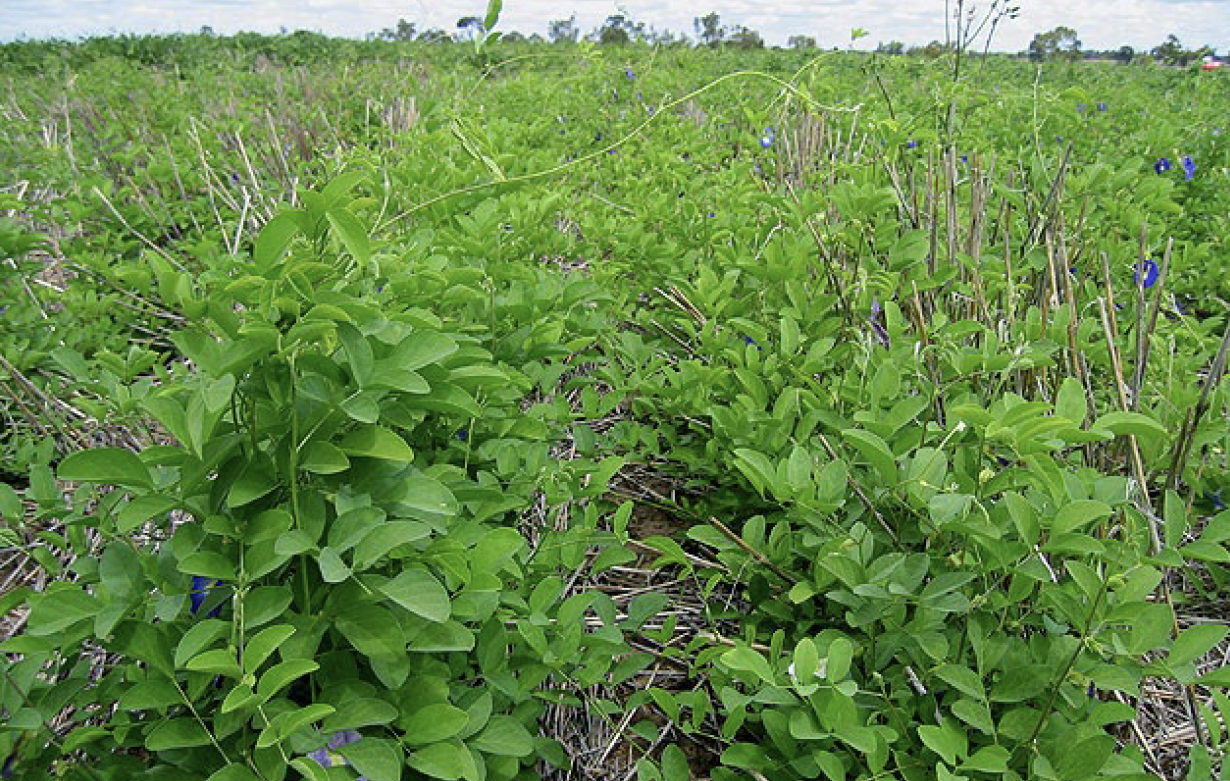
BUTTERFLY PEA(Clitoria ternatea)
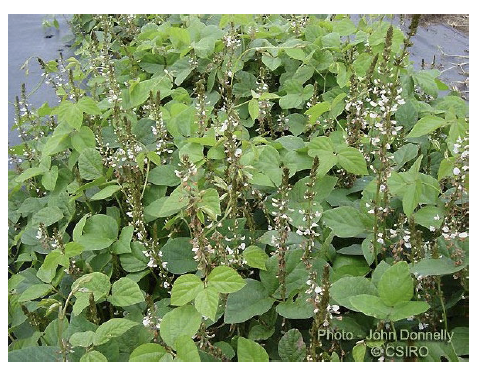
glycine
Neonotonia wightii
(vines)
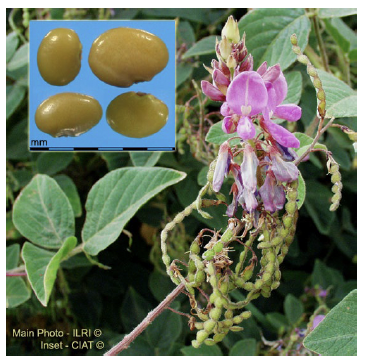
Greenleaf desmodium
(Desmodium intortum)
(vines)

siratro
Macroptilium atropurpureum
(vines)
strengths:
GLYCINE(Neonotonia wightii)
(tropic,subtropic)
-v productive
-moderately drought resistant
-good seed production
-palatable
-persistant
limitations:
GLYCINE(Neonotonia wightii)
-restricted near neutral, fertile soils
-Slow nodulation and establishment
-Susceptible to frost
-Environmental weed potential
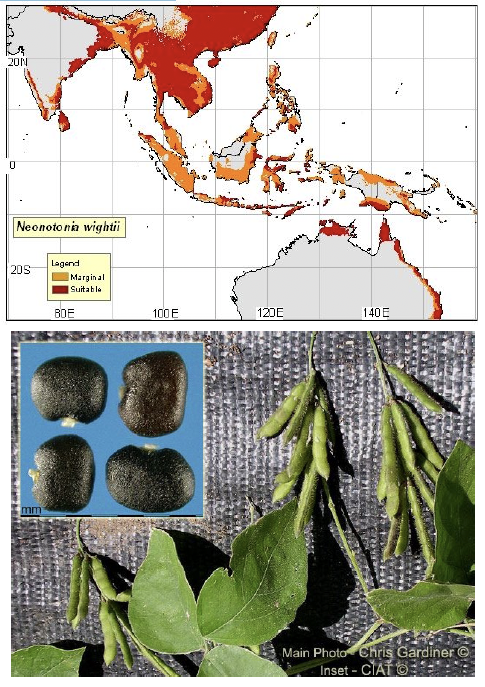
GLYCINE(Neonotonia wightii)
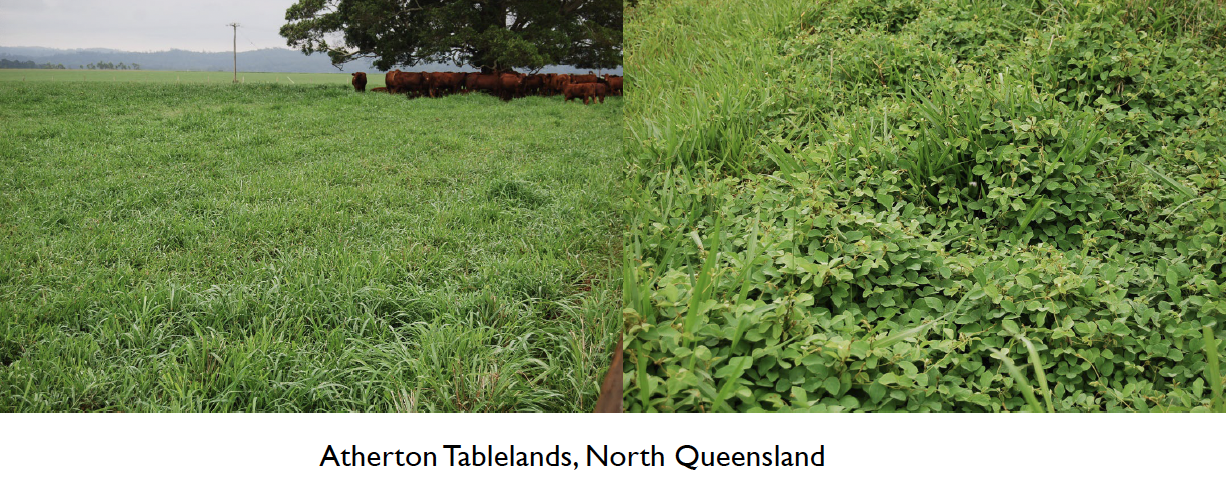
tinaroo glycine & signal grass pasture
strengths:
LEUCAENA(Leucaena leucocephala)
-v high nutritive quality for ruminant livestock
-Highest digestibility of tropical legumes
-Tolerant of prolonged dry periods
- retains leaf into dry
-Produces multiple products in a wide range of farming systems
limits:
LEUCAENA(Leucaena leucocephala)
(tropic, subtropic)
-Poorly adapted to acid, infertile, waterlogged soils
-Poor growth at low temperatures; susceptible to frosting
-weak in seedling stage and slow to establish
-Mimosine and condensed tannins limit use for non-ruminant livestock
-escape into surrounding environment and become weedy
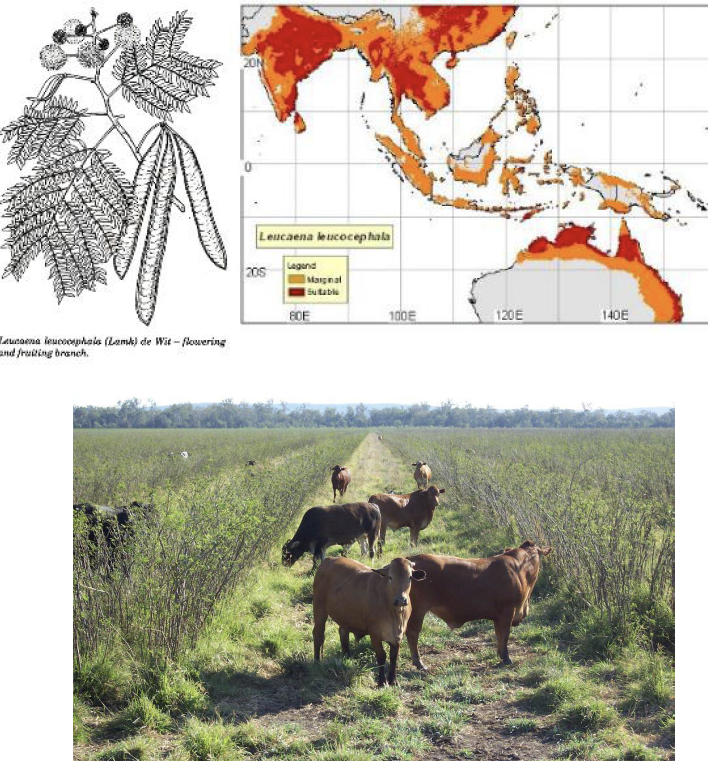
LEUCAENA(Leucaena leucocephala)
-legume, tropic, subtropic
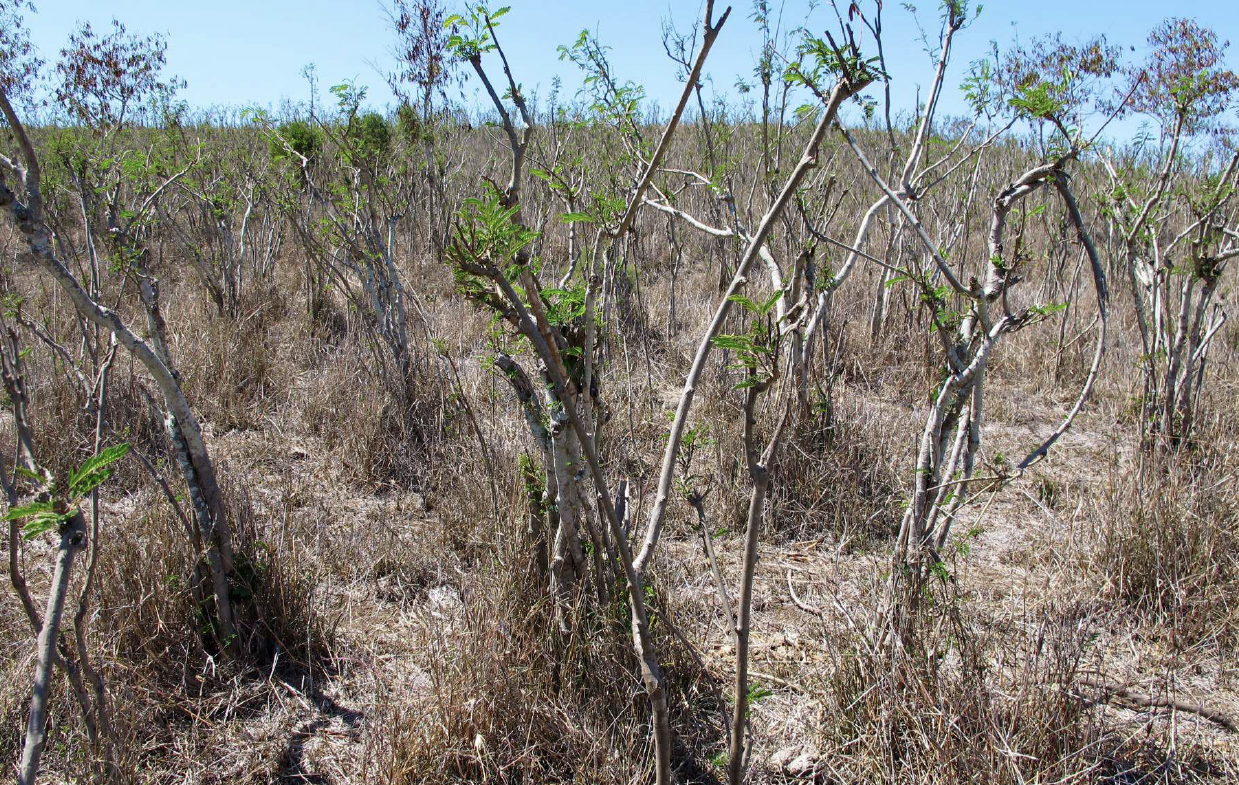
LEUCAENA(Leucaena leucocephala)
tropic, subtropic
-legume
strengths:
WHITE CLOVER (Trifolium repens)
(subtropic, temperate legume)
-High nutritive value and year-round growth
-Well adapted to grazing
-Australian cultivars have relatively high heat tolerance
-Cold tolerant perennial
limits:
WHITE CLOVER (Trifolium repens)
-limited by viral diseases
-Low tolerance to summer moisture stress
-Requires neutral pH and high P soils
-can cause bloat
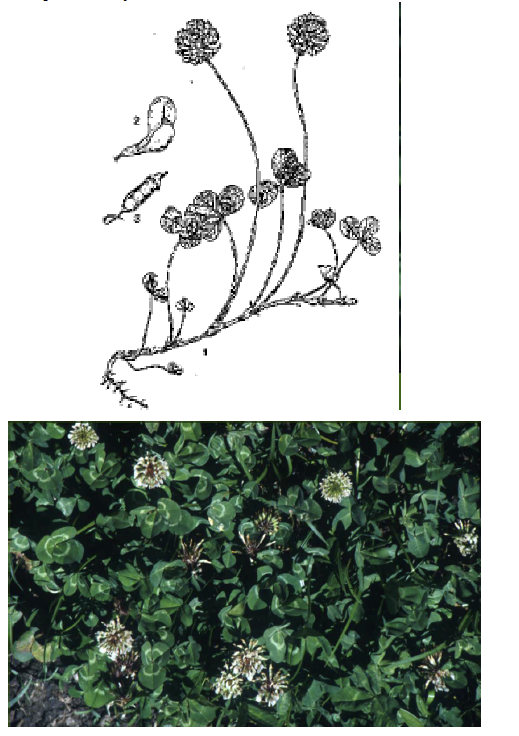
WHITE CLOVER (Trifolium repens)
💪🏽:
LUCERNE(Medicago sativa)
-year round
-high quality
-dual purpose (grazing, conservation)
-extracts water from deep
-persistent
-wide range of climatic adaptation: warm, temperate, climates, subtropics
-responsive to irrigation
limits:
LUCERNE (Medicago sativa)
-Restricted soil adaptation
-Intolerant of waterlogging
-Cannot stand continuous grazing: rotational grazing or regular spelling
-bloat
(subtropic, temperate)

LUCERNE (Medicago sativa)
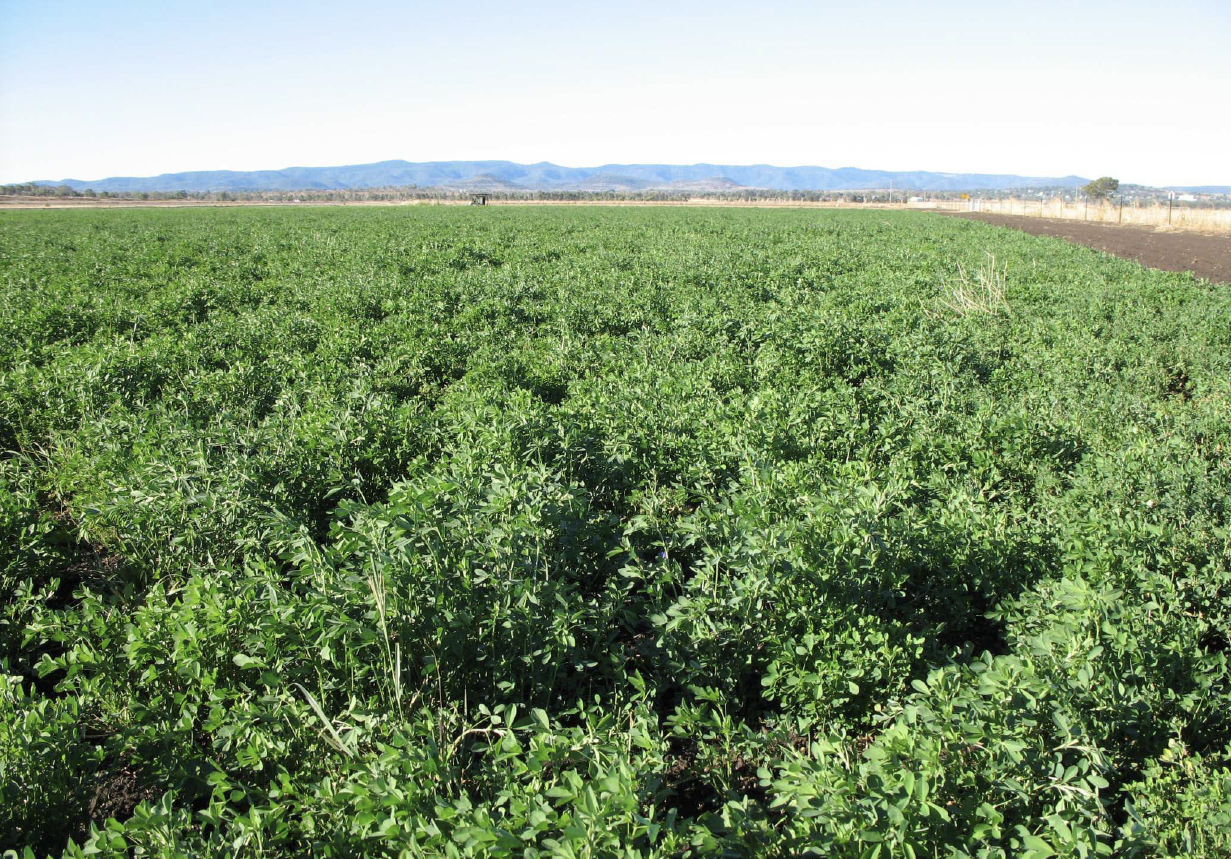
LUCERNE (Medicago sativa)